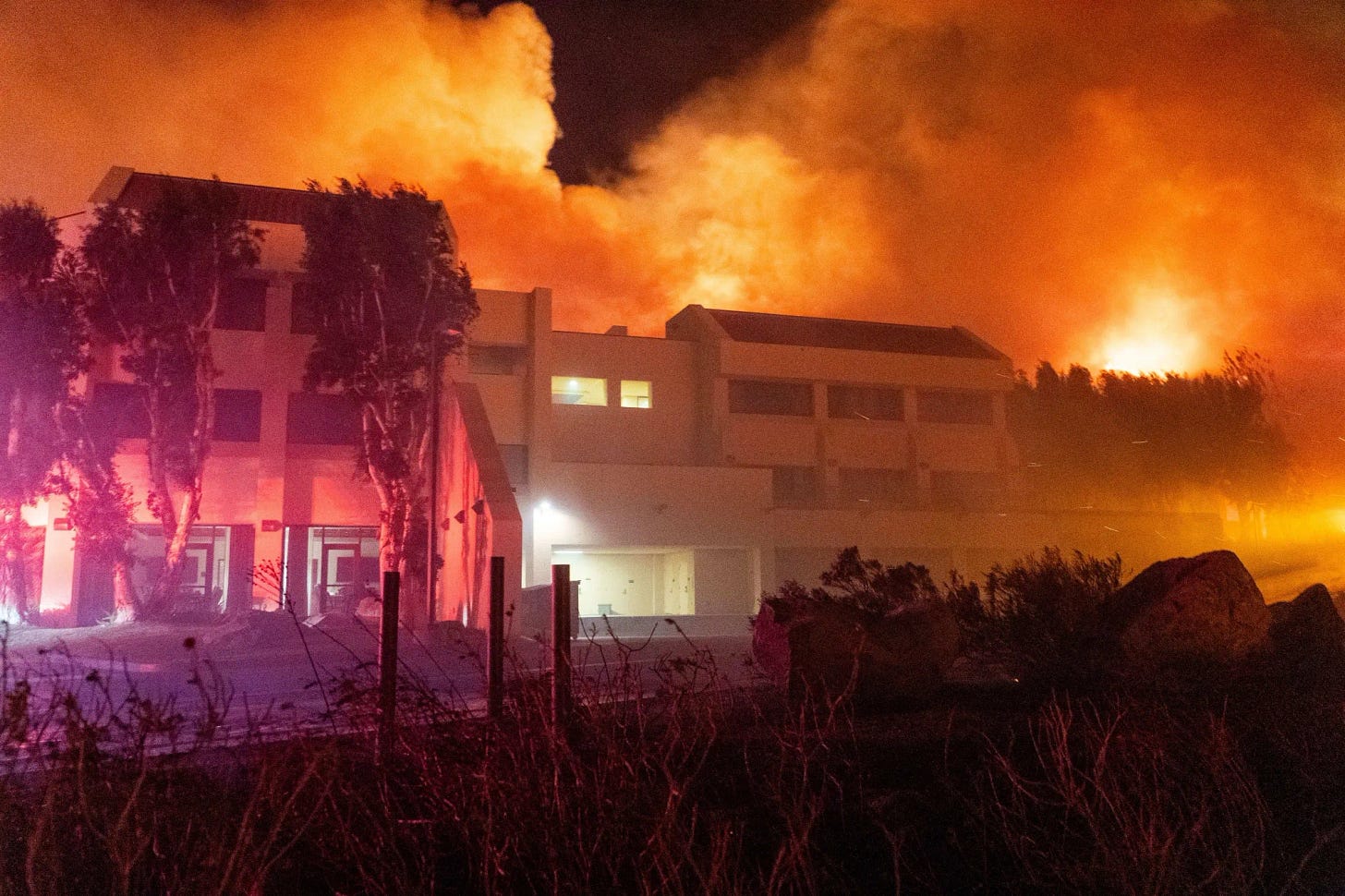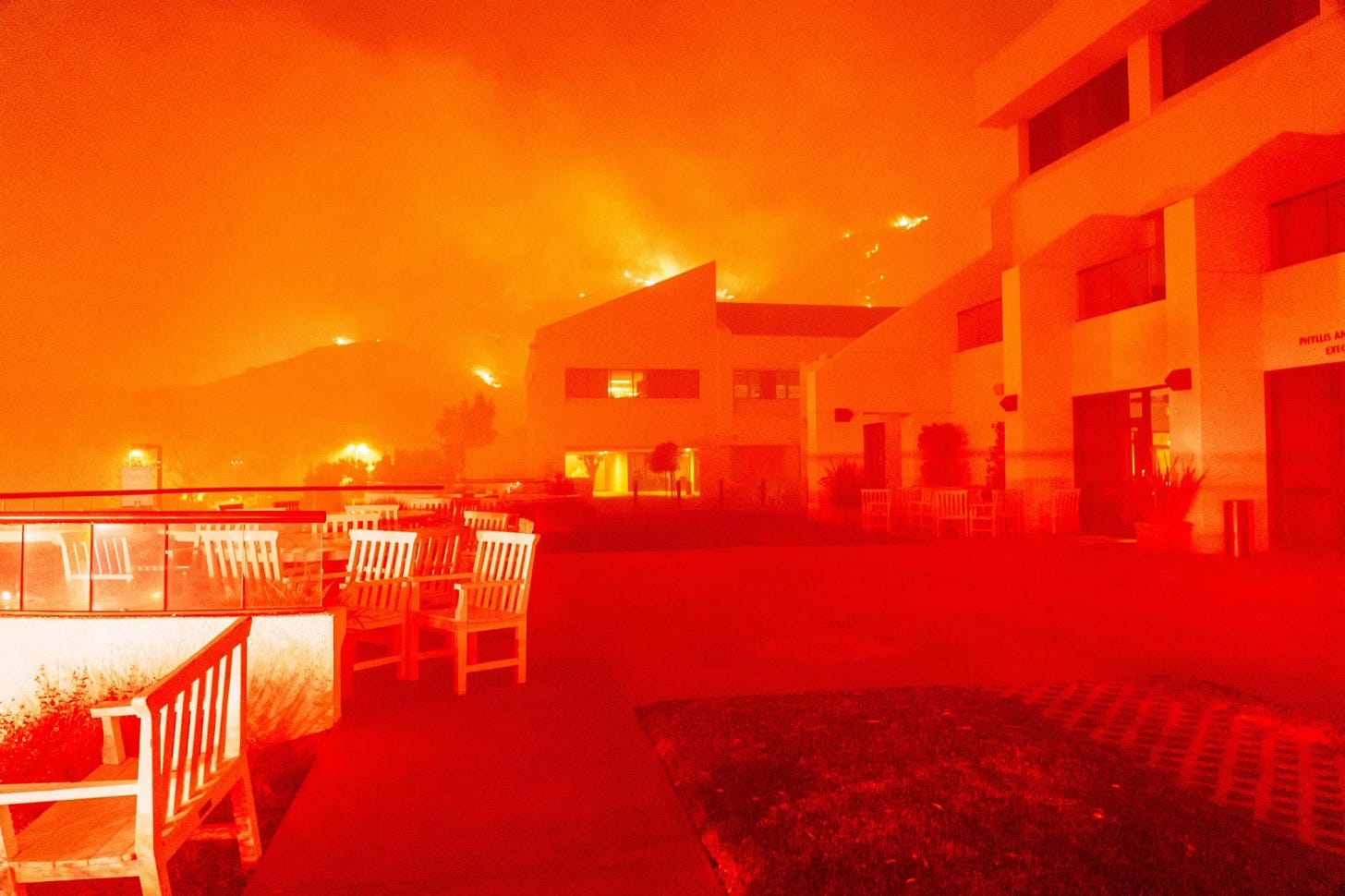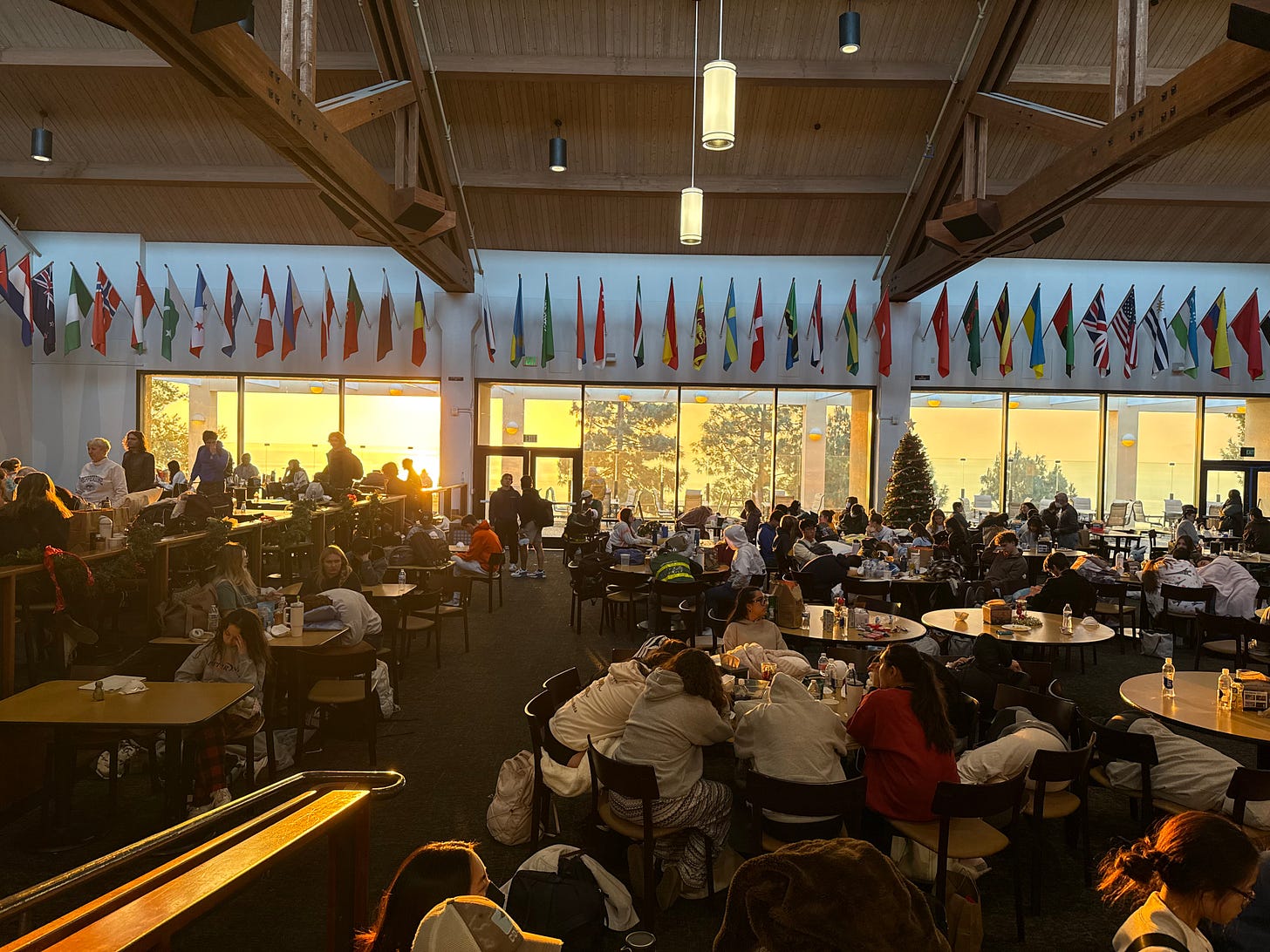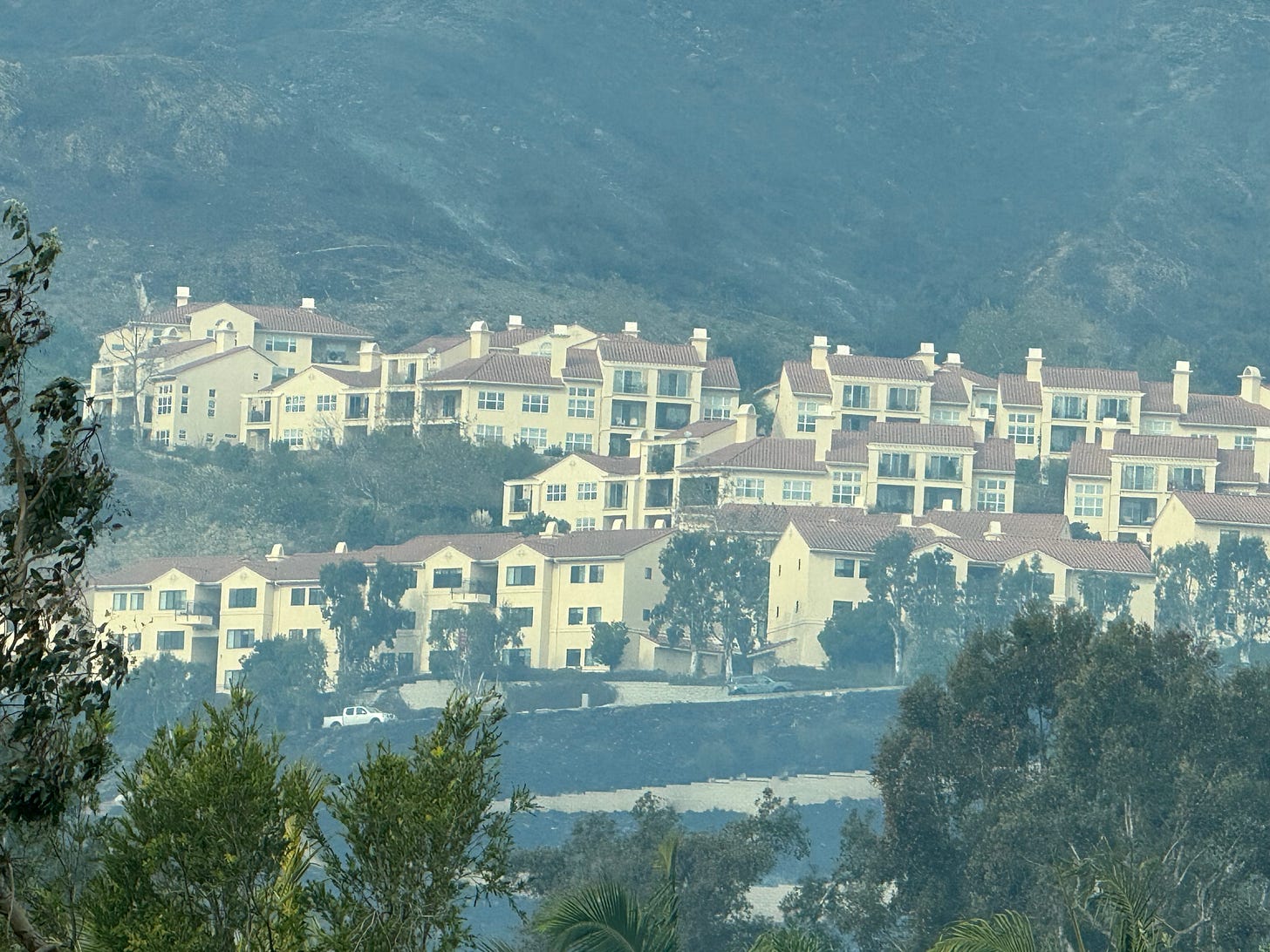(Photo creds: Bloomberg News)
It was about 11pm on a windy Monday night when a fist pounded on my bedroom door. We use noise machines at night to help our sleep, and it took a pounding fist to wake us. My niece who currently lives with us said there was a fire and they were considering evacuating our neighborhood. I wandered out into the street and saw the fire glow in the distance but fires in Malibu typically burn toward the water and the wind was blowing in the opposite direction. So, this one seemed to not be a serious threat at that time. Then the wind changed and within about thirty minutes I could see the flames on the hillside near our home on the campus. Ten minutes after that, I was in the cafeteria and part of emergency response. By midnight, flames could be seen as close as Alumni Park.
But, I was not worried. That is odd, I know. But I have my reasons. First, I know how practiced and thorough our emergency response protocols and team are. Second, Pepperdine has extensive experience with fires and maintains the campus to prevent fires year-round. Third, I’ve been through several fires here, and had seen the fire burn around and even through the campus with no loss of life or structure. Fourth, the Los Angeles Fire Department stages in Alumni Park during a fire. So, we had hundreds of firefighters, numerous choppers, etc. within a stone’s throw of the cafeteria.
My freshman year at Pepperdine, we had a terrible fire (Old Topanga). It burned more than 18,000 acres. As it scorched through Malibu, Governor Pete Wilson affirmed the fire had attracted the largest mobilization of emergency equipment and personnel in the state’s history, including the LA Riots. More than 7,000 firefighters, 1,000 fire companies and 450 agencies were called in for assistance. Pepperdine was fine. No one was hurt. It was the first time Pepperdine sheltered in place. Instead of evacuating, we stayed put.
In 1996 (my senior year) another fire burned almost 15,000 acres. I was an RA and helped evacuate students to the Firestone Fieldhouse where we again sheltered in place. Once more, the campus was largely untouched. No one was hurt. I learned over the years those who got hurt were typically those who either tried to flee when it wasn’t safe or stayed in their house when they were told to evacuate to a safe place.
On Monday night, I found myself in the Pepperdine cafeteria with hundreds of students who would spend the night there, “sheltering in place.” Given Pepperdine’s location, it might seem odd that we would choose to shelter our community in place. But, given our location next to the Pacific Ocean, that LA County Fire Department stages at the school, and that Pepperdine maintains it campus diligently protect from fire encroachment year-round, the safest place to be is not in a car on one of the few roads leading in and out of Malibu. It’s to move to the center of campus.
So that is what we did.
We sheltered in place in Payson Library and the Cafeteria. There was less smoke and there was food. There was prayer and worship. There were masks and water. There were conversations between faculty and students and their pets. It was a big, slightly smoky slumber party with a bit more anxiety. But it was safe. As the fire burned all around us, we knew we were safe. Though the flames could be seen all around us, we knew we would be okay.
We were. And when the fire changed course and came back to threaten the next night…we did it again. And we were okay again.
God be praised.
Reflections on Refuge
It is natural for us to want to run away when a storm or fire comes upon us suddenly. When we are afraid, it is also common for us to trust in the safety of something that cannot really provide it.
However, if we really believe God is our refuge, we would do well to consider our response to fearful circumstances. The opening lines of Psalms 46 come to mind:
“God is our refuge and strength, always ready to help in times of trouble. So we will not fear when earthquakes come and the mountains crumble into the sea. Let the oceans roar and foam. Let the mountains tremble as the waters surge!”
I suppose we can add, “let the fire burn,” too. The principle is simple: The safest place to be is sometimes right where we are. If where you are is with God, you are safe.
There are numerous psalms that express this unshakeable truth:
God is our refuge.
He will protect us.
We do not need to fear.
If you find yourself in the midst of a storm, an earthquake, or a fire, literally or figuratively—consider sheltering in place and trusting God to protect you. Do not rely on your own wisdom. Don’t let your fear direct your steps. Shelter in place by praying, by worshipping, and trusting the God who has seen you through fire after fire before. Scripture also tells of His faithfulness in times like these.
Maintain your life year-round. For, we don’t know when the storm (or fire) will come. But, it will (Matthew 7). When it does, we can trust God, our refuge.
This photo I took in the cafeteria near sunrise on the morning after the first wave of fire had burned through.
I took this picture from my car as I drove up the hill to my home.







